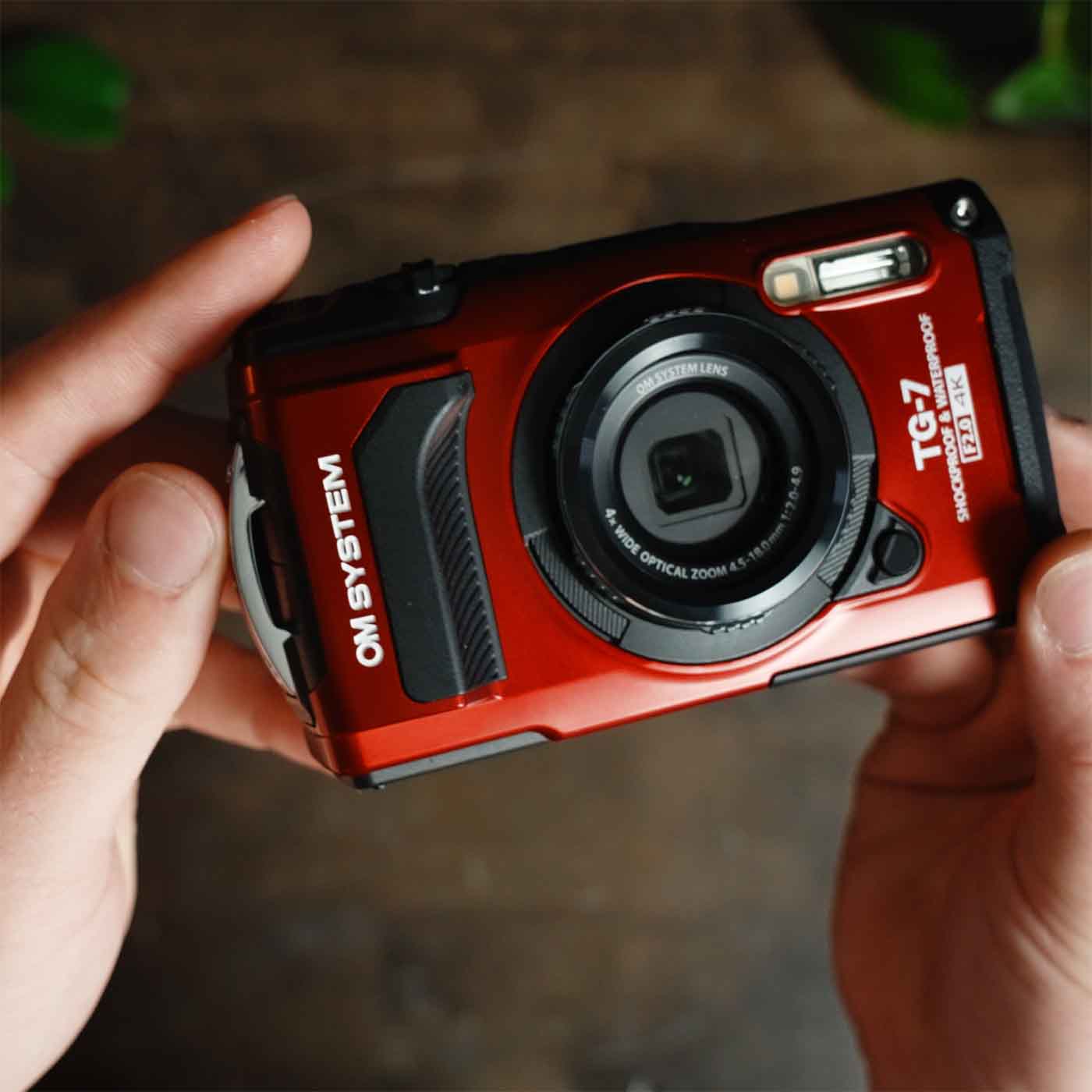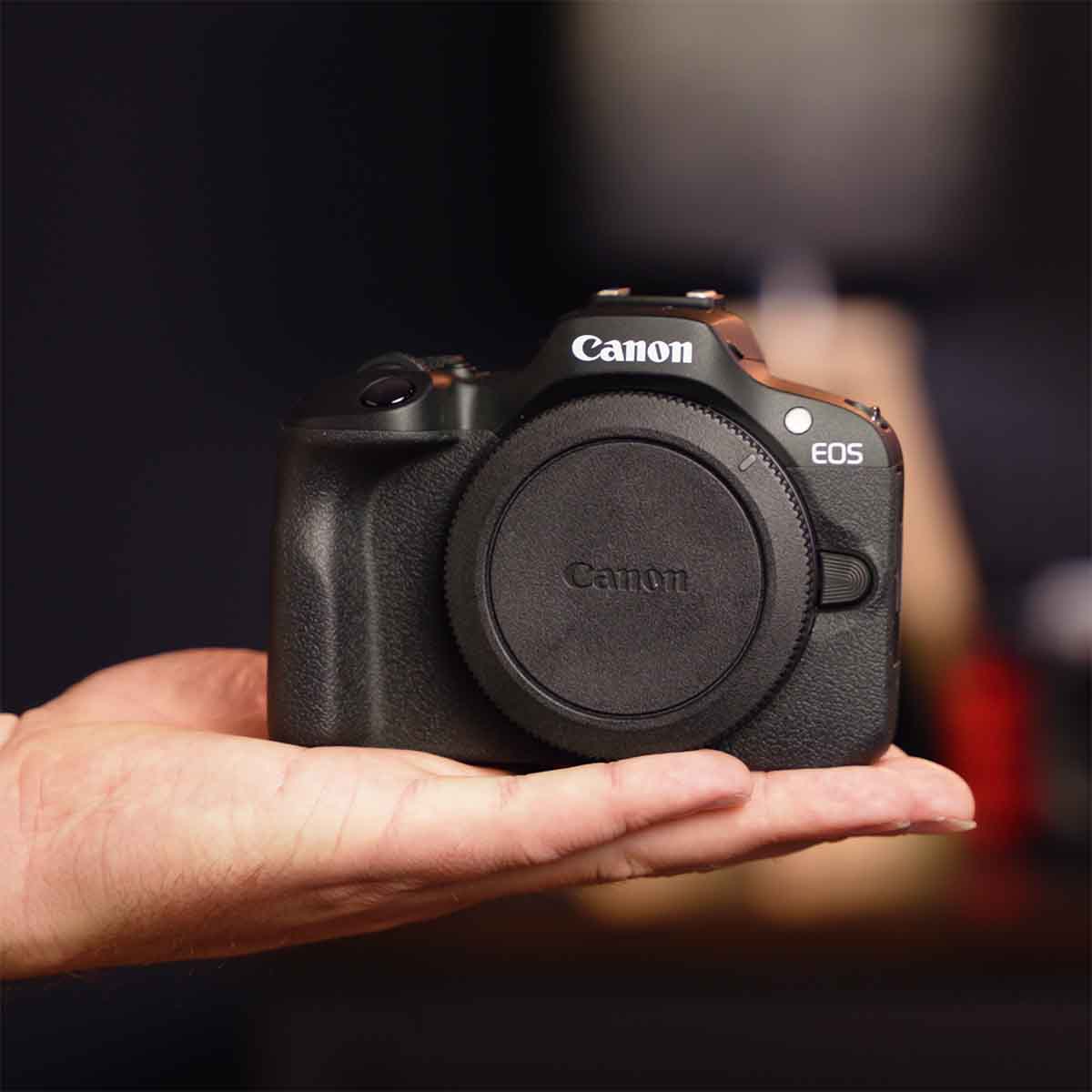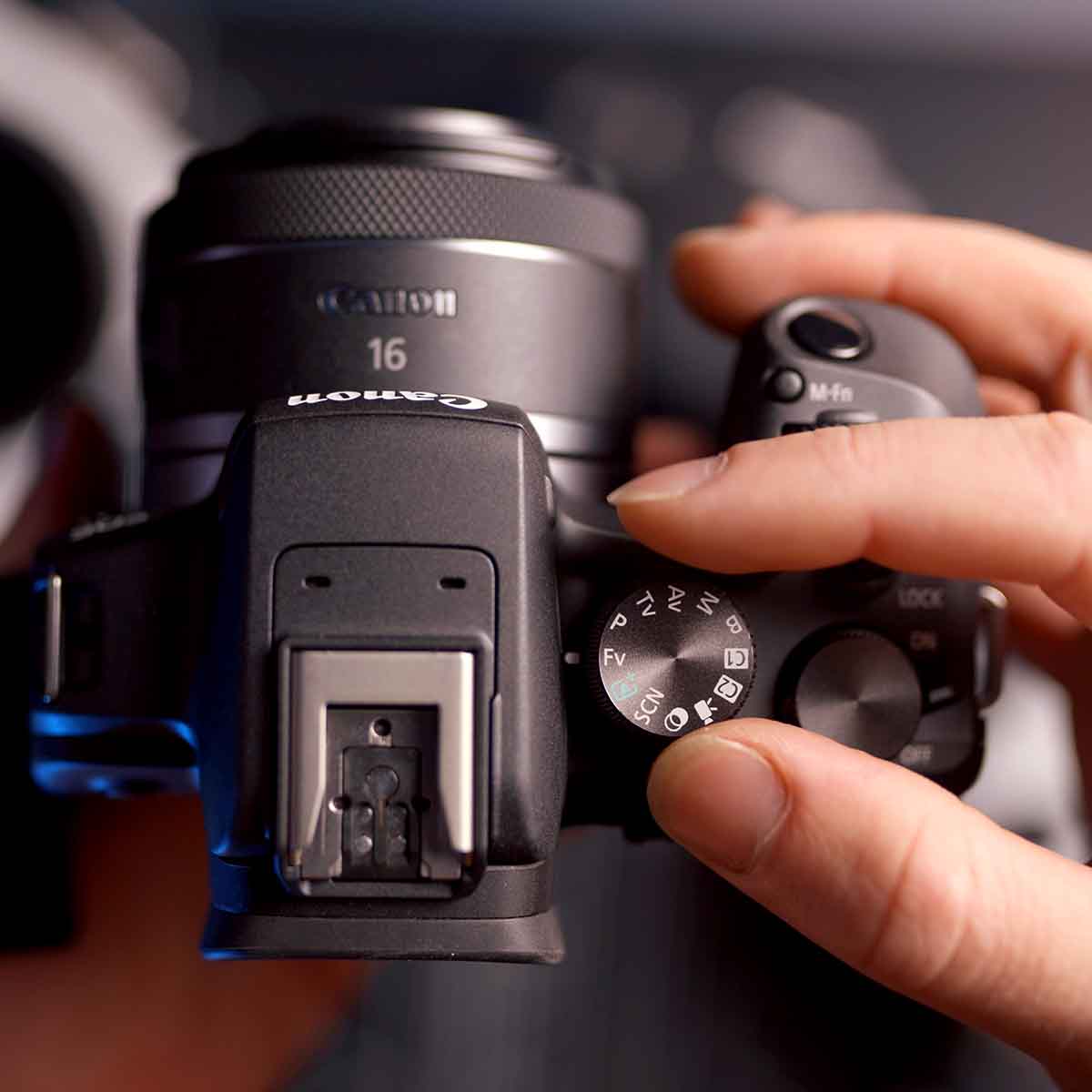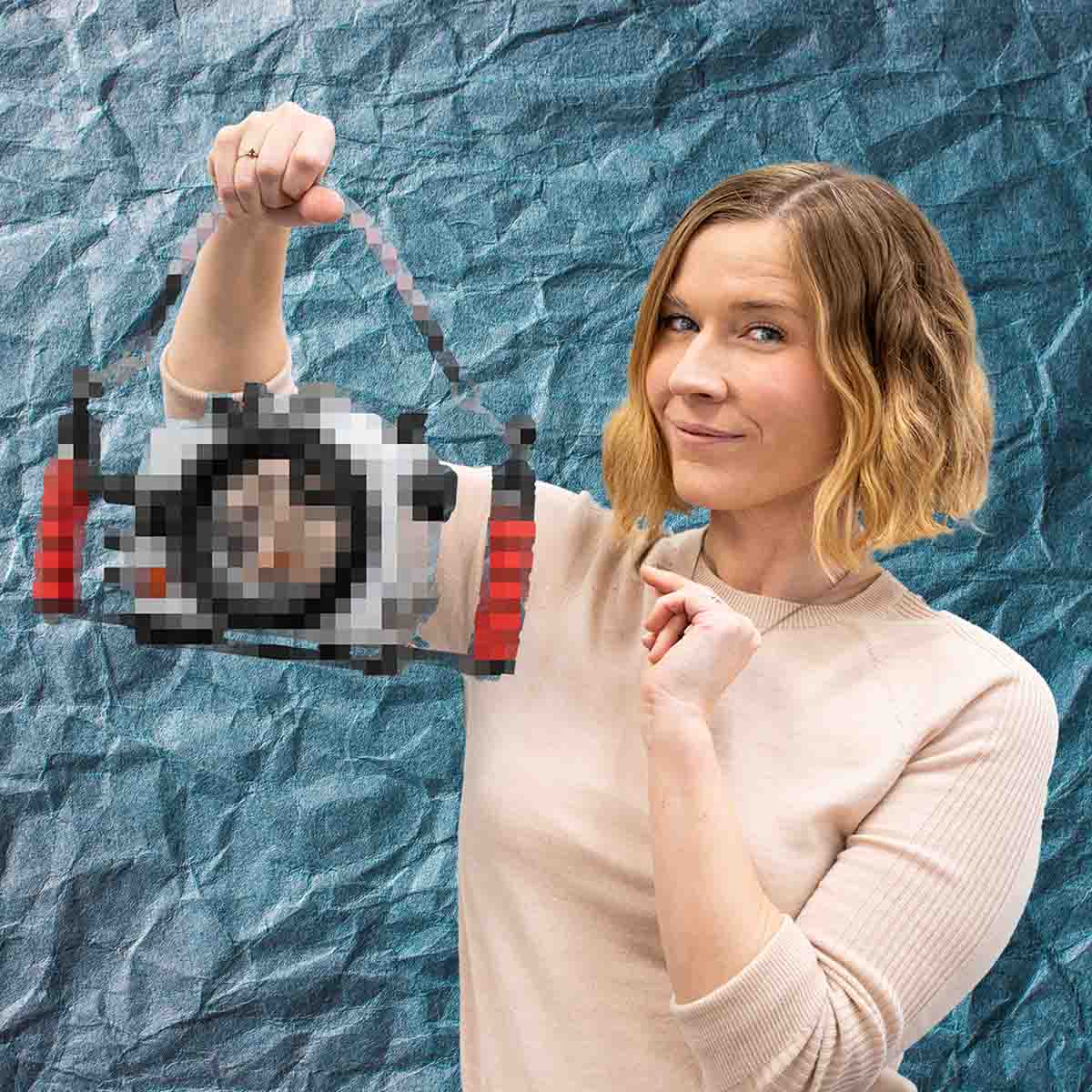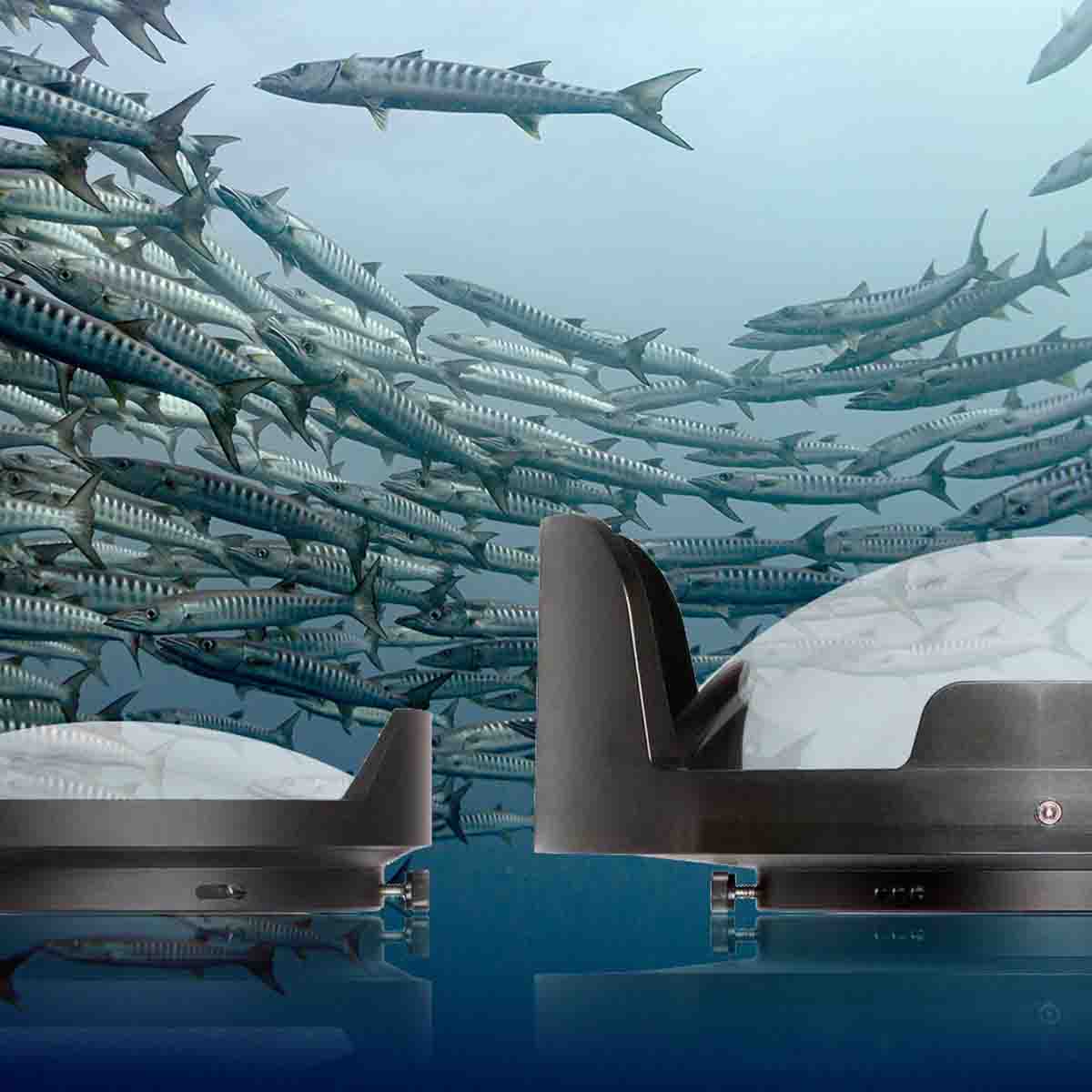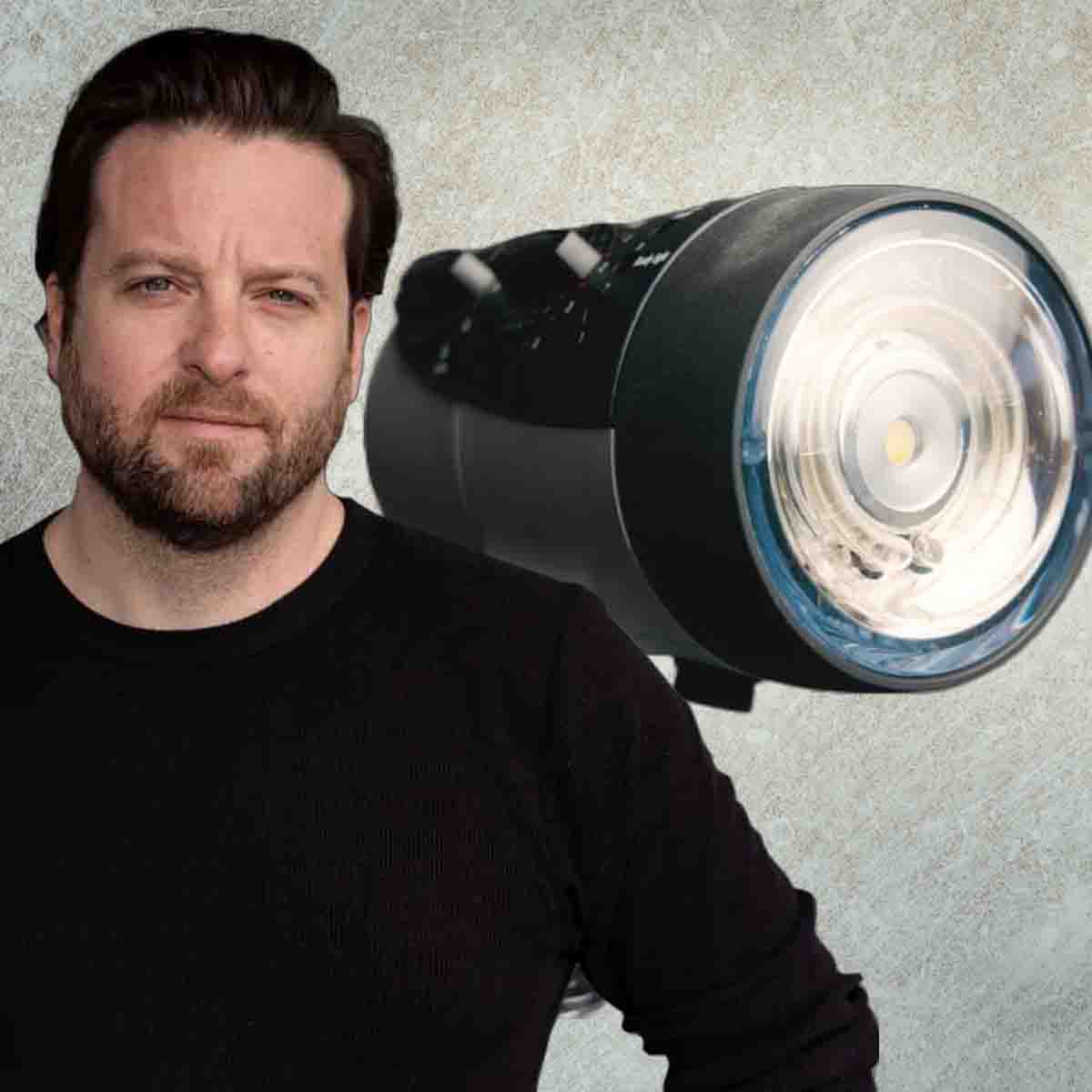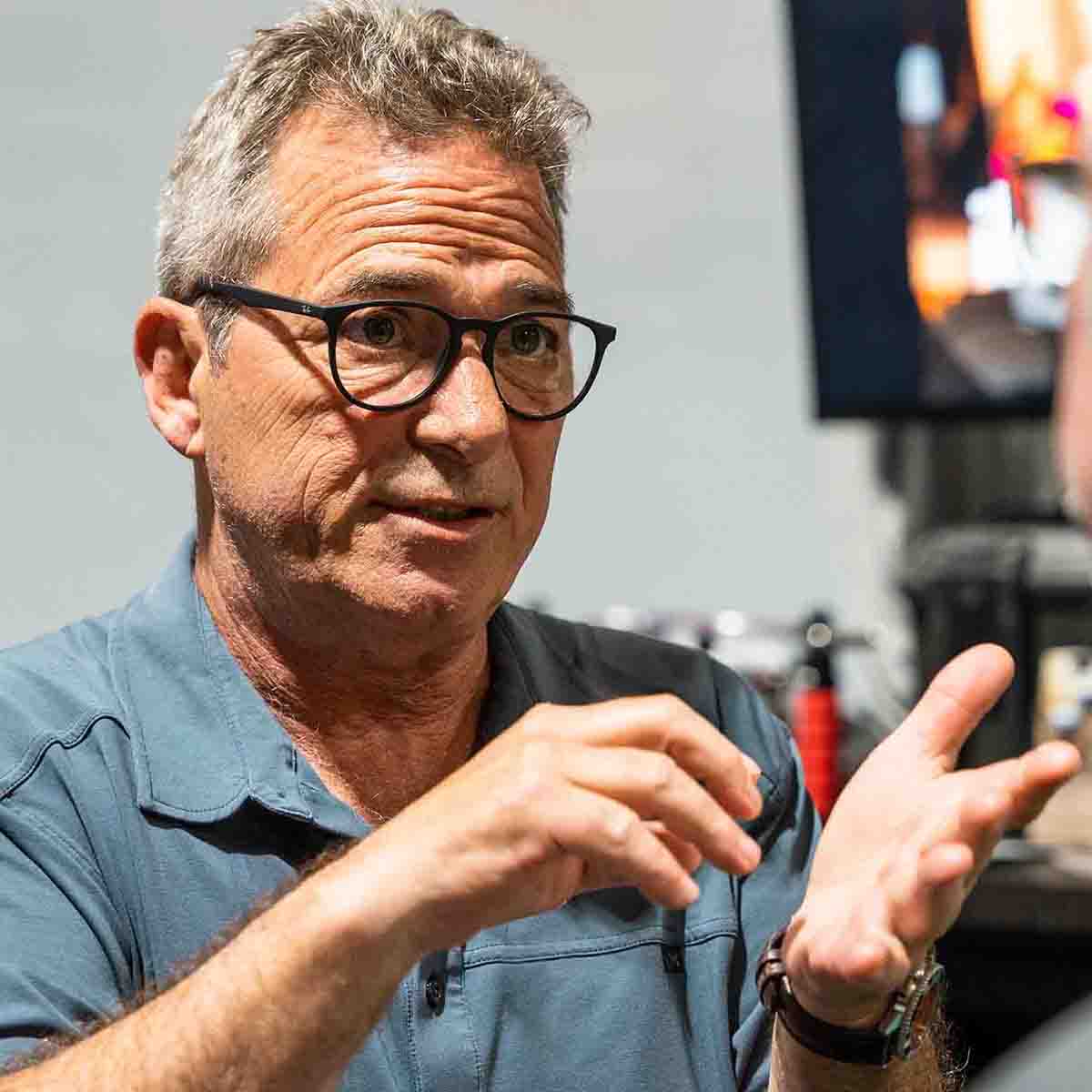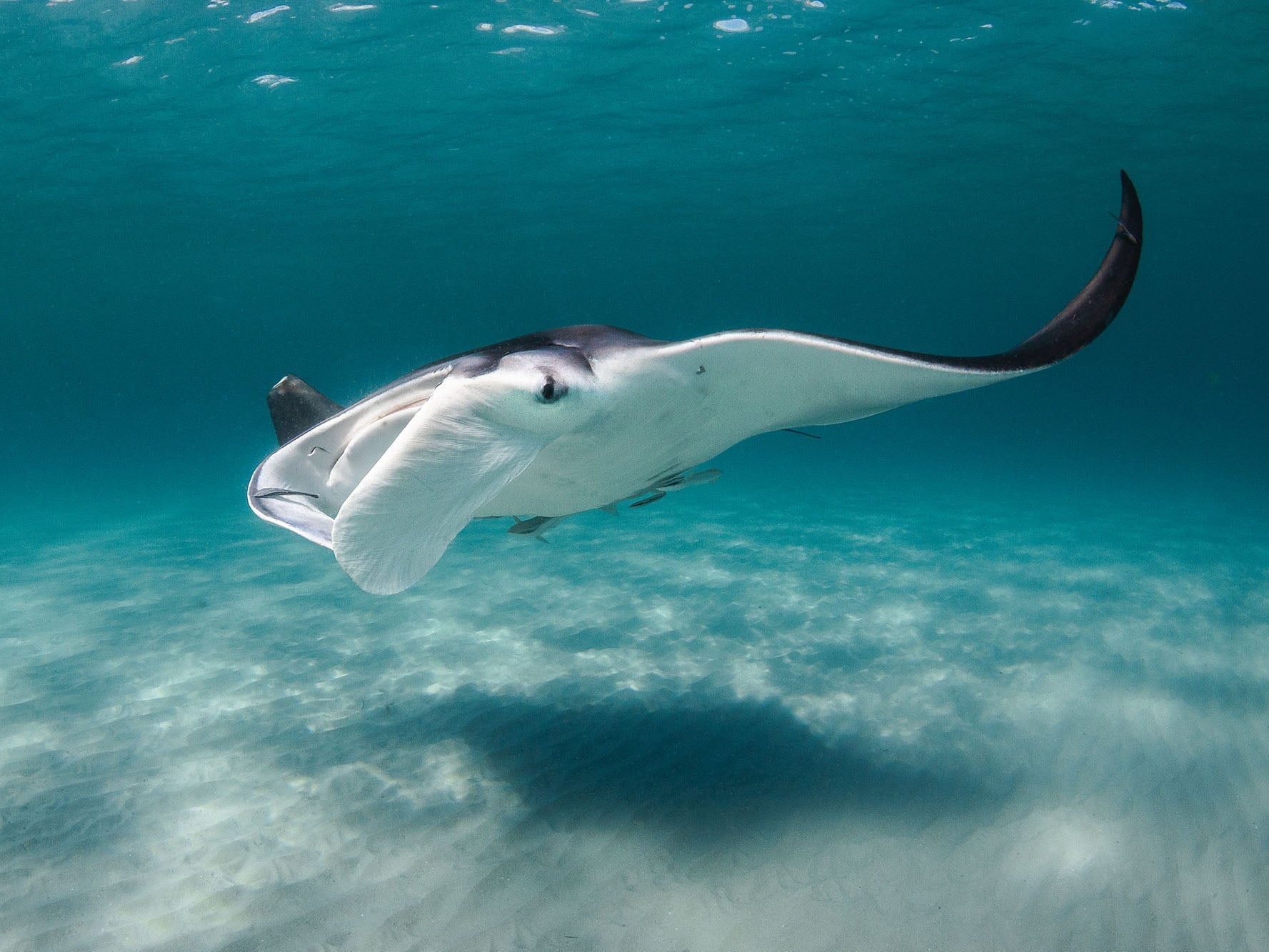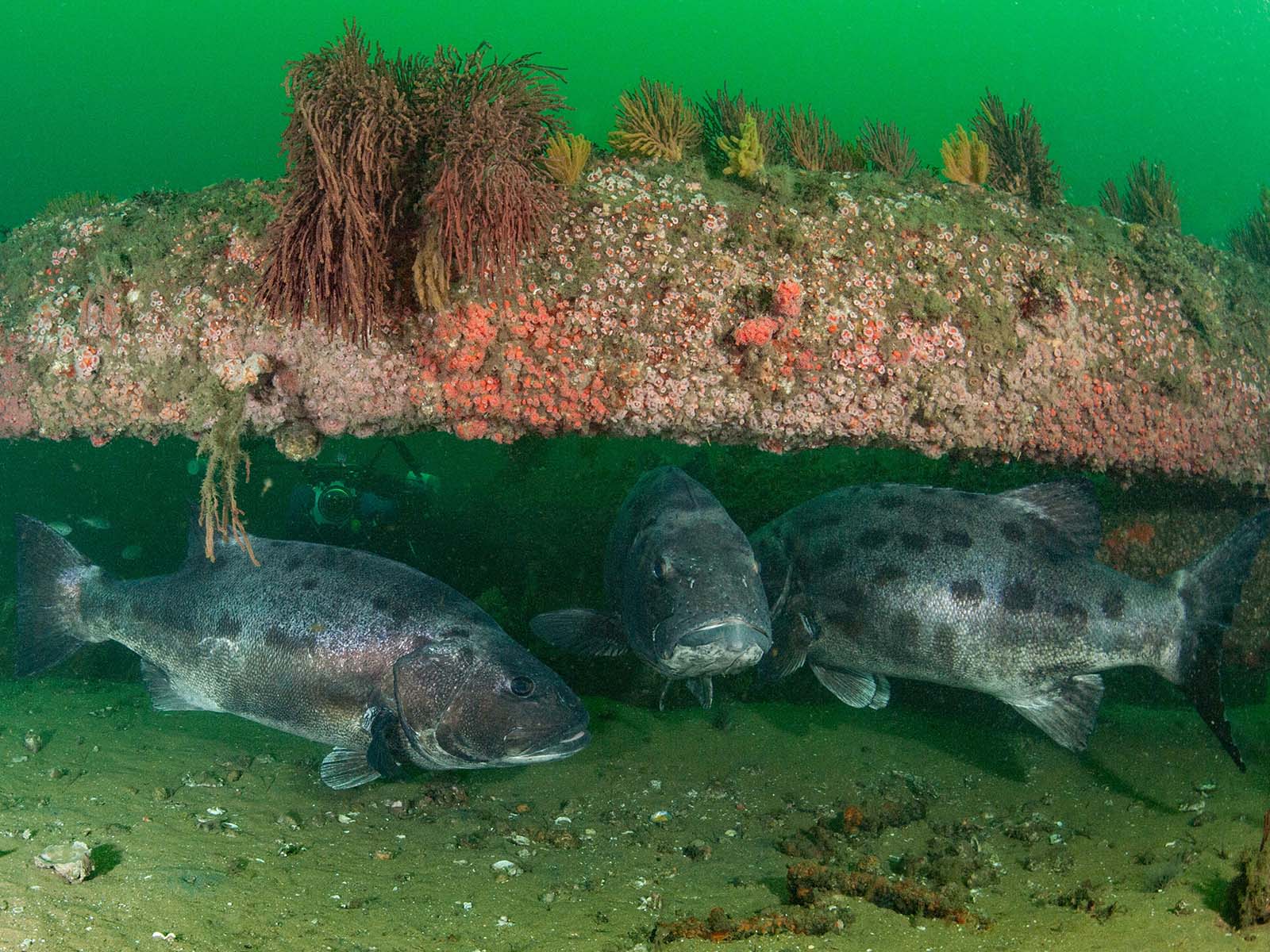Bali isn’t new. Divers go. Tourists too. The island hums with scooters, temples, incense, and rain. But head northeast. Get away from the crowds. Find Tulamben. That’s where it starts.
"You’d surface and wonder what day it was.
That’s when you know the diving’s good."
 Diver explores a vibrant red gorgonian fan rising from the black sand bottom at a dive site in Tulamben, Bali, Indonesia. Gorgonian fans provide critical habitat for small marine life and offer a colorful foreground. © David Fleetham
Diver explores a vibrant red gorgonian fan rising from the black sand bottom at a dive site in Tulamben, Bali, Indonesia. Gorgonian fans provide critical habitat for small marine life and offer a colorful foreground. © David Fleetham
Alum Batu Beach Resort
My partner Jennifer Ross and I stayed at Alam Batu Beach Resort. We were there two weeks. Four dives a day. One every night. Fifty-six in all. The kind of rhythm you feel in your bones. Sleep, dive, eat, shoot, repeat.
The resort clings to a coastline made of black volcanic sand and rock. Mount Agung rises behind it like an old god. The sea rolls out in front, deep and slow. Beneath the surface, life crowds the lava rubble—coral gardens, soft and hard, black sand slopes, outcrops hiding things most divers never see.
"The rule was simple:
if your hair’s wet, eat. If it’s dry, it is time to dive."
 This underwater scene captures a thriving patch of Dendronephthya soft corals, their brilliant red branches swaying gently with the ocean current. © David Fleetham
This underwater scene captures a thriving patch of Dendronephthya soft corals, their brilliant red branches swaying gently with the ocean current. © David Fleetham
The Dive Sites
The dive site list read like promises. Dreamland. Adventure. Liberty Wreck. Others with names less known but just as rich—Ketut, Batu Niti, Pasir Ilmuh. No repeats unless we asked. We asked often.
Our guide, Nengah, knew the reef like he’d built it with his own hands. He didn’t talk much. Just pointed, signaled, nodded. That was enough. Every dive he found something rare. Mimic octopus. Paddle-flap scorpionfish yawning like bored dragons. Zanzibar whip coral shrimp thinner than thread. Pygmy seahorses the size of rice grains. If I blinked, I missed them. He didn’t.
 Renowned for its astonishing ability to impersonate other marine animals such as lionfish, flatfish, and sea snakes, the mimic octopus, Thaumoctopus mimicus, is a master of disguise. This image highlights the octopus in its natural habitat—an icon of marine adaptability and evolutionary innovation. © David Fleetham
Renowned for its astonishing ability to impersonate other marine animals such as lionfish, flatfish, and sea snakes, the mimic octopus, Thaumoctopus mimicus, is a master of disguise. This image highlights the octopus in its natural habitat—an icon of marine adaptability and evolutionary innovation. © David Fleetham
The Equipment
We shot fast and slow. Canon macro lenses. Twin Ikelite strobes. We adjusted buoyancy in blackwater with only the focus light glowing on silt and scale. Time disappeared down there. You’d surface and wonder what day it was. That’s when you know the diving’s good.
 Yellow pygmy seahorse. Also known as Bargibant's pygmy seahorse, they are found from southern tropical Japan, throughout the Philippines, Indonesia, east to Palau, Papua New Guinea, Solomon Islands, Fiji, Vanuatu and the Great Barrier Reef in Australia. This tiny marvel is no larger than a grain of rice, yet bursts with intricate detail. © David Fleetham
Yellow pygmy seahorse. Also known as Bargibant's pygmy seahorse, they are found from southern tropical Japan, throughout the Philippines, Indonesia, east to Palau, Papua New Guinea, Solomon Islands, Fiji, Vanuatu and the Great Barrier Reef in Australia. This tiny marvel is no larger than a grain of rice, yet bursts with intricate detail. © David Fleetham
"For photographers, it’s a dream. Warm water. Soft current. Clear light. Endless subjects."
Surface Intervals
Surface intervals were quiet. Wetsuits peeled off. Rinse tanks sorted. Camera room cool and clean. Compressed air hissed through nozzles as staff dried housings and handed you a towel. You didn’t ask. They already knew.
 This striking image captures a yawning vibrant red paddle-flap scorpionfish, Rhinopias eschmeyeri, on the volcanic reef slopes of Tulamben, Bali, Indonesia. © David Fleetham
This striking image captures a yawning vibrant red paddle-flap scorpionfish, Rhinopias eschmeyeri, on the volcanic reef slopes of Tulamben, Bali, Indonesia. © David Fleetham
Breakfast came with fruit and warm bread. Lunch with ginger tea. Dinner under soft light and stars. The food was good. The service better. But we weren’t there for that. We were there for the creatures.
 Marine biologists are still deciding if the color variation of this cleaner shrimp, Urocaridella antonbrunii, is a new species or sub-species. Two of them are pictured here inspecting a yellowmargin moray eel, Gymnothorax flavimarginatus. © David Fleetham
Marine biologists are still deciding if the color variation of this cleaner shrimp, Urocaridella antonbrunii, is a new species or sub-species. Two of them are pictured here inspecting a yellowmargin moray eel, Gymnothorax flavimarginatus. © David Fleetham
Liberty Wreck was the only place you saw other divers. The ship’s changed. A part of the hull is gone now, collapsed in time. But the coral’s alive. Soft trees waving in current. Anthias swimming like fire in the water. Cleaner shrimp danced on groupers’ lips. The wreck breathes its own rhythm.
 A vibrant peacock mantis shrimp, Odontodactylus scyllarus, cradles its clutch of eggs beneath the waves off Tulamben, Bali, Indonesia. Known for their striking colors and lightning-fast strikes, these fascinating crustaceans also display remarkable parental care. © David Fleetham
A vibrant peacock mantis shrimp, Odontodactylus scyllarus, cradles its clutch of eggs beneath the waves off Tulamben, Bali, Indonesia. Known for their striking colors and lightning-fast strikes, these fascinating crustaceans also display remarkable parental care. © David Fleetham
Night and Blackwater Dives
Night dives were something else. Different rules. The sea went black. Lights went on. Broadclub cuttlefish shimmered, changing colors in a slow ballet. Bobtail squid hovered in puffs of ink. Demon stingers crawled like something cursed. One night we saw dozens of larval mantis shrimp—cartwheeling sparks in the dark.
"Creatures rose from the void. Transparent, glowing, delicate."
 This image was captured a half mile off the island of Bali on a blackwater night dive with the bottom 1500+ feet below. The crab has captured two jellyfish which it will use as protection from predators. The body of the crab is less than one inch in length in this larval stage. © David Fleetham
This image was captured a half mile off the island of Bali on a blackwater night dive with the bottom 1500+ feet below. The crab has captured two jellyfish which it will use as protection from predators. The body of the crab is less than one inch in length in this larval stage. © David Fleetham
Blackwater dives took us over 1,500 feet of ocean. Nothing below but depth. Creatures rose from the void. Transparent, glowing, delicate. A larval crab held jellyfish like shields. A flying fish unfolded thin wings and slipped past us. Box jellies floated like glass. We wore full 3mm suits and hoods for protection from anything that might sting. Blackwater doesn’t forgive carelessness.
 A delicate bobtail squid, Euprymna berryi, hovers mid-water during a night dive off Tulamben, Bali, Indonesia. Suspended in the dark, this bioluminescent cephalopod glows softly as it navigates the ocean. © David Fleetham
A delicate bobtail squid, Euprymna berryi, hovers mid-water during a night dive off Tulamben, Bali, Indonesia. Suspended in the dark, this bioluminescent cephalopod glows softly as it navigates the ocean. © David Fleetham
At the end of each day we had hot showers under the stars. Lanterns glowing. Dinner hot and quiet. Gear drying and cards full.
A Photographer's Dream
For photographers, it’s a dream. Warm water. Soft current. Clear light. Endless subjects. The rule was simple: if your hair’s wet, eat. If it’s dry, it is time to dive.
We left with friends, terabytes, and a little sadness. Bali doesn’t give you everything. It gives you enough to bring you back.
If you shoot underwater, go to Alam Batu. Bring your gear. Bring your patience. And bring more memory than you think you’ll need. You’ll use it.
 Water reflection of coconut palm trees in an infinity swimming pool with ocean view at sunrise, Alam Batu Beach Resort, Tulamben, Bali, Indonesia. © David Fleetham
Water reflection of coconut palm trees in an infinity swimming pool with ocean view at sunrise, Alam Batu Beach Resort, Tulamben, Bali, Indonesia. © David Fleetham
Additional Viewing
Extending Your Bottom(less) Time While Blackwater Diving
Beqa Island: An Underwater Photographer's Dive into Fiji's Wild Side
Diving into the Verzasca River, Switzerland [VIDEO]
Close Encounters: Photographing Tiger Sharks in the Maldives
Underwater Photography in Raja Ampat with Grant Thomas
Behind the Lens: Sardine Run in Mexico with Josh Blank
Protect Sea Turtles with a Postage Stamp! [VIDEO]
My Micronesian Ikelite System for Canon R5 // David Fleetham's Underwater Photography Gear [VIDEO]
 Ambassador David Fleetham left his hometown of Vancouver, Canada, for Maui in 1986 and never looked back. He earned his USCG Captain's license while working in various dive charter businesses, shooting, and submitting his photos to magazines and businesses. One of the most prolific underwater photographers of his time, David now has galleries and agents in over 50 countries that reproduce his images thousands of times each year. Read more...
Ambassador David Fleetham left his hometown of Vancouver, Canada, for Maui in 1986 and never looked back. He earned his USCG Captain's license while working in various dive charter businesses, shooting, and submitting his photos to magazines and businesses. One of the most prolific underwater photographers of his time, David now has galleries and agents in over 50 countries that reproduce his images thousands of times each year. Read more...


